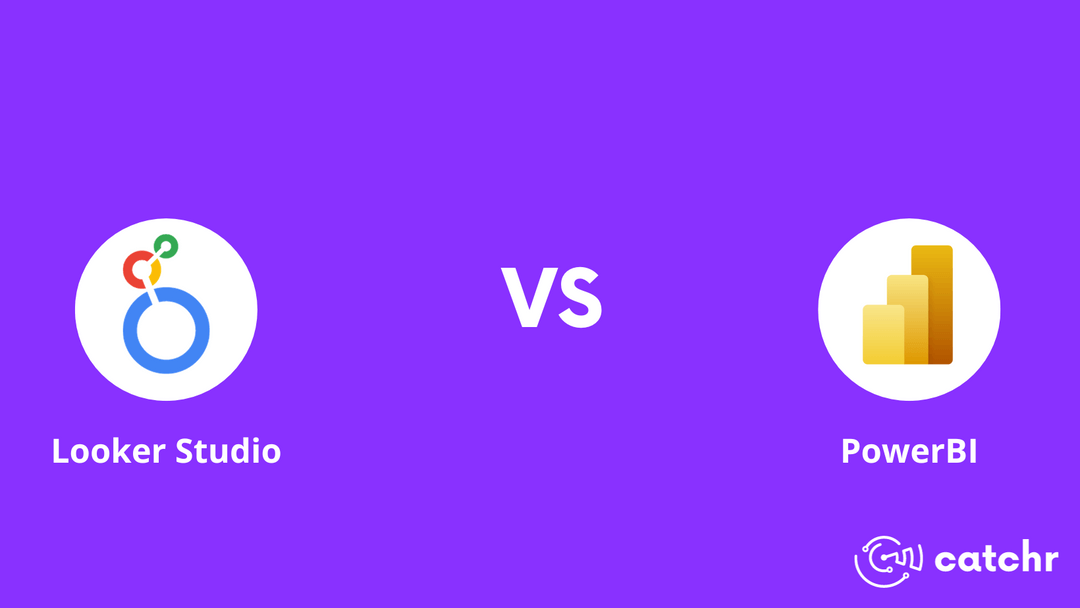When it comes to choosing a business intelligence tool, there are many options available in the market. Two of the most popular ones are Looker Studio and Power BI. Both of these tools offer advanced data analytics and visualization features that can help organizations make data-driven decisions. However, choosing the right tool for your organization can be challenging. In this article, we will compare Looker Studio and Power BI based on various criteria and help you make an informed decision. This article is part of our comprehensive series on guide to Looker studio.
Features and Capabilities: Both Looker Studio and Power BI offer a comprehensive set of features tailored to different user needs. Looker Studio is recognized for its intuitive, no-code interface and seamless integration with Google’s ecosystem. While it does not provide native data modeling, it leverages connected databases for structured reporting and analysis. Recent updates have also introduced new visualization types, enhancing data representation.
Power BI, on the other hand, continues to offer a wide range of built-in data connectors, making it easy to import data from various sources. With the addition of AI-powered analytics and Copilot for Power BI, users can now generate insights faster using natural language queries. Power BI also excels in advanced visualization, offering interactive dashboards, real-time reporting, and AI-driven data exploration.
Ease of Use: Power BI is often considered the more user-friendly tool, thanks to its drag-and-drop interface and pre-built templates that simplify report creation. Recent updates, including AI-powered Copilot, further enhance usability by allowing users to generate insights and build reports using natural language queries, making the process even more intuitive.
Looker Studio, while originally requiring some technical knowledge, has become more accessible with its no-code interface and seamless integration with Google’s ecosystem. It allows users to quickly connect data sources and create reports without extensive training. However, those needing complex data modeling and advanced analytics may still find Power BI more suited to their needs.
Customization: Both Looker Studio and Power BI offer customization options, but Looker Studio is known for its flexibility in tailoring reports and visualizations to meet specific business needs. It provides a wide range of customization features, including custom themes, advanced styling, and the ability to create personalized dashboards. Users looking to optimize their reporting for business insights can explore Customizing Looker Studio for Your Business Needs to make the most of its customization capabilities. Power BI, on the other hand, offers limited customization compared to Looker Studio but provides deep integration within the Microsoft ecosystem, allowing for streamlined workflows.
Integration: Both Looker Studio and Power BI seamlessly integrate with various data sources and third-party tools. Looker Studio enables users to connect to databases, data warehouses, and cloud services, along with integrations for Slack, Salesforce, and Jira, making it a versatile choice for businesses working with diverse platforms. Power BI, however, is deeply embedded within Microsoft’s ecosystem, offering native integrations with Excel, SharePoint, and Dynamics 365, making it ideal for organizations reliant on Microsoft products. Businesses looking to track key performance metrics and evaluate integrations effectively can leverage Looker Studio Analytics to gain deeper insights into their data.
Pricing: Pricing is an important consideration when choosing a business intelligence tool. Looker Studio is completely free and allows users to create reports and dashboards without a subscription. However, Looker (the enterprise BI platform) follows a custom quote-based pricing model, which may be costly for small and mid-sized organizations needing advanced features.
Power BI, on the other hand, provides flexible pricing options, including a free version with basic features and paid tiers like Power BI Pro and Power BI Premium, which offer advanced analytics, AI-powered insights, and enhanced collaboration tools.
Conclusion
Looker Studio and Power BI are both powerful business intelligence tools that offer a wide range of features and capabilities. Looker Studio is known for its advanced data modeling capabilities and customization options, while Power BI is known for its user-friendly interface and ease of use. Choosing the right tool for your organization depends on various factors such as your business needs, technical expertise, and budget. It is recommended to evaluate both tools based on your specific requirements before making a final decision.
Need help choosing the right BI tool? Let our experts optimize your Looker Studio setup with our Looker Studio Services.




0 Comments